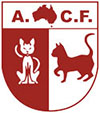| Havana Brown |  |
 |
 |
 |
 |
 |
 |
 |
 |
|---|---|---|---|---|---|---|---|---|---|
 |
|||||||||
| Breed Name | Havana Brown | ||||||||
| Recognition status | not recognized | not recognized | full | not recognized | not recognized | not recognized | not recognized | see Havana | accepted |
| Breed code | |||||||||
| Allowable outcrosses | Certain limited outcrossing is acceptable | ||||||||
| Recognised colours | brown | ||||||||
| Breeding restrictions | |||||||||
| Special notes | In the 1990's, many Havana Brown breeders became concerned about an alarming decrease in the gene pool diversity of the breed. After extensive research and consultation with several geneticists, a proposed out-crossing program was approved by the Havana Brown Breed Council. The proposal was then presented to the Board of Directors and was approved in 1998. The original proposal permitted the breeding of an unregistered domestic shorthair cat (black or blue only) or an Oriental (shorthair only, any color except pointed, cinnamon or fawn) to a registered standard Havana Brown. In 1999, the program was amended to also allow breedings of a Havana Brown to Siamese (chocolate or seal point only). The resulting kittens from any of these breedings are known as the F1 generation. The mating of an F1 cat to a Havana Brown produces a litter that is considered to be Havana Brown (F2), provided the individual kittens meet the color standard for Havana Brown. F1 cats/kittens cannot be shown. One parent of any breeding must always be a full Havana Brown. |
G



